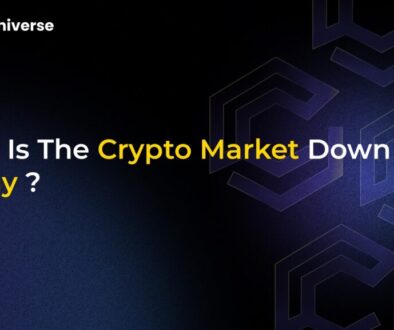Tokenized Short-Term Funds Gain Traction in Financial Markets

The Rise of Tokenized Short-Term Funds
The financial world is witnessing a significant shift with the emergence of tokenized short-term funds. These innovative digital financial products are bridging the gap between traditional finance (TradFi) and decentralized finance (DeFi), offering a new avenue for investors seeking efficiency and accessibility. A recent Moody’s report highlights their impressive growth, surging to $5.7 billion in assets since 2021.
This growth signals increasing interest from conventional asset managers, insurers, and brokerages looking to provide their clients with seamless access to both fiat and digital markets. Typically backed by low-risk assets like US Treasurys, tokenized funds operate much like traditional money market funds but leverage blockchain technology for issuing and managing fractional shares, enabling instant settlement.
How Tokenized Short-Term Funds Work
Tokenized money market funds (MMFs) represent a powerful fusion of the stability found in traditional MMFs with the cutting-edge capabilities of blockchain technology. Here’s a closer look at their core mechanics:
- Blockchain Integration: These funds utilize blockchain to issue and manage fractional shares, transforming traditional fund units into digital tokens. This tokenization allows for real-time transactions and ownership tracking on a distributed ledger.
- Smart Contracts: Automated smart contracts play a crucial role, managing the fund’s operations, from share issuance to redemption. This automation significantly reduces operational costs and enhances settlement efficiency.
- Fractionalization of Shares: Unlike traditional funds that might require larger minimum investments, tokenized funds allow for the fractionalization of shares. This means investors can buy and sell smaller portions of the fund, increasing accessibility.
The benefits of this innovative approach are compelling:
- Faster Settlements: Transactions can settle almost instantly, a stark contrast to the T+2 or T+3 settlement times common in traditional markets.
- Reduced Costs: Automation via smart contracts and the elimination of intermediaries can lead to lower operational and transactional costs.
- Broader Market Access: By leveraging blockchain, these funds can offer 24/7 trading and greater accessibility, especially for institutional investors looking to bridge TradFi and DeFi.
- Enhanced Liquidity: The ability to trade fund shares instantly and in smaller amounts enhances liquidity within the digital asset ecosystem.
Market Size, Growth, and Key Use Cases
The tokenized short-term fund market has seen remarkable expansion, with assets under management (AUM) reaching an impressive $5.7 billion since 2021. This surge is a clear indicator of growing institutional demand for blockchain-powered financial products, particularly those offering the efficiency of real-time settlement.
These funds primarily invest in highly liquid, low-risk government securities, such as US Treasurys. The attractiveness of these underlying assets has only increased with recent interest rate hikes, making the yields more appealing to a broader range of investors. Major players in the financial industry, including firms like abrdn and Franklin Templeton, are actively participating in this space, further validating its potential.
The versatility of tokenized funds opens up several compelling use cases:
- Yield Optimization for Institutional Investors: Institutions can leverage these funds to optimize yields on their short-term cash holdings, benefiting from faster settlement and potentially broader market access.
- Liquidity Management for Insurance Firms: Insurance companies can utilize tokenized funds for more efficient liquidity management, ensuring immediate access to capital while earning returns on their reserves.
- Collateral in Trading and Lending Activities: Tokenized fund shares can serve as efficient collateral in various trading and lending activities within both traditional and decentralized financial ecosystems, streamlining operations and reducing counterparty risk.
- Short-Term Liquidity Transactions: With higher interest rates, short-term liquidity transactions like tokenized repurchase agreements (repos) and securities lending become more attractive, driving further adoption of tokenized funds.
Regulatory and Security Challenges
Despite their promising growth, tokenized short-term funds face significant regulatory and security hurdles that need to be addressed for sustained mainstream adoption.
Regulatory Landscape and Uncertainty
The regulatory environment, particularly in the U.S., remains a key challenge. The U.S. Securities and Exchange Commission (SEC) is actively examining how existing securities laws apply to tokenized assets, but clear and comprehensive compliance pathways are still evolving. Globally, the regulatory landscape is fragmented, leading to a patchwork of rules that can create legal complexities and uncertainties for investors and fund managers operating across different jurisdictions.
Blockchain-Related Vulnerabilities and Cyber Risks
The underlying blockchain technology, while offering immense benefits, also introduces new security considerations:
- Smart Contract Flaws: The reliance on smart contracts means that any vulnerabilities or bugs in their code could lead to significant financial losses or operational disruptions.
- Cyber Risks: As digital assets, tokenized funds are susceptible to cyberattacks, including hacking, phishing, and other malicious activities targeting the blockchain network or associated platforms.
- Limited Fund Manager Experience: This is a nascent market, and many traditional fund managers may have limited experience navigating the unique operational and security challenges posed by blockchain technology.
Credit rating agencies like Moody’s have highlighted these risks, emphasizing the need for investors to carefully weigh the benefits against potential downsides related to security, operational challenges, and legal ambiguities. As the market continues to mature, the development of clear regulatory frameworks and international harmonization will be essential to mitigate these challenges and foster a secure, compliant environment for tokenized short-term funds.
The Future is Tokenized
Tokenized short-term funds represent a significant evolution in financial markets, offering a blend of traditional stability and blockchain-powered efficiency. Their rapid growth to $5.7 billion in assets underscores a clear demand for digital financial products that can offer faster settlements, lower costs, and broader access. While regulatory clarity and robust security measures remain critical areas for development, the potential for these funds to optimize yield, manage liquidity, and serve as versatile collateral positions them as a transformative force in the future of finance.


